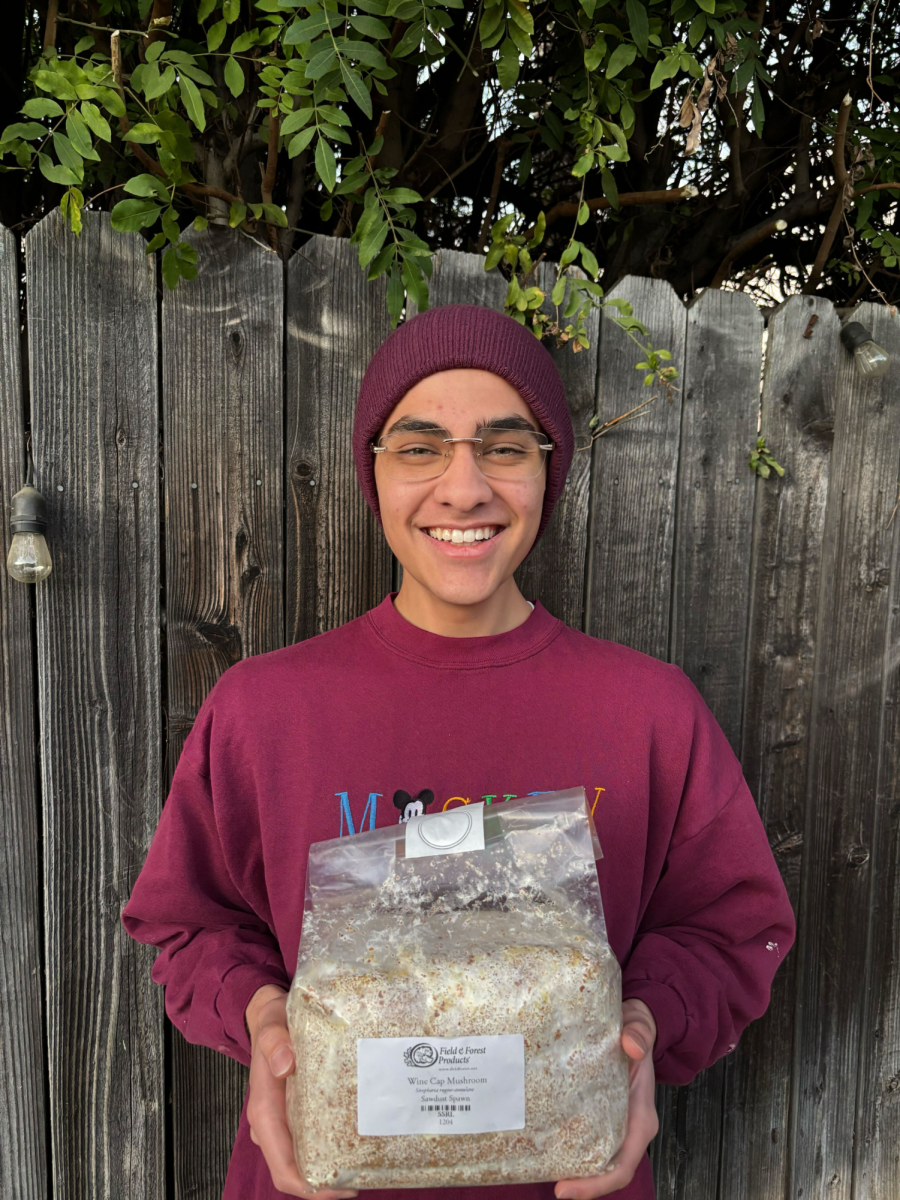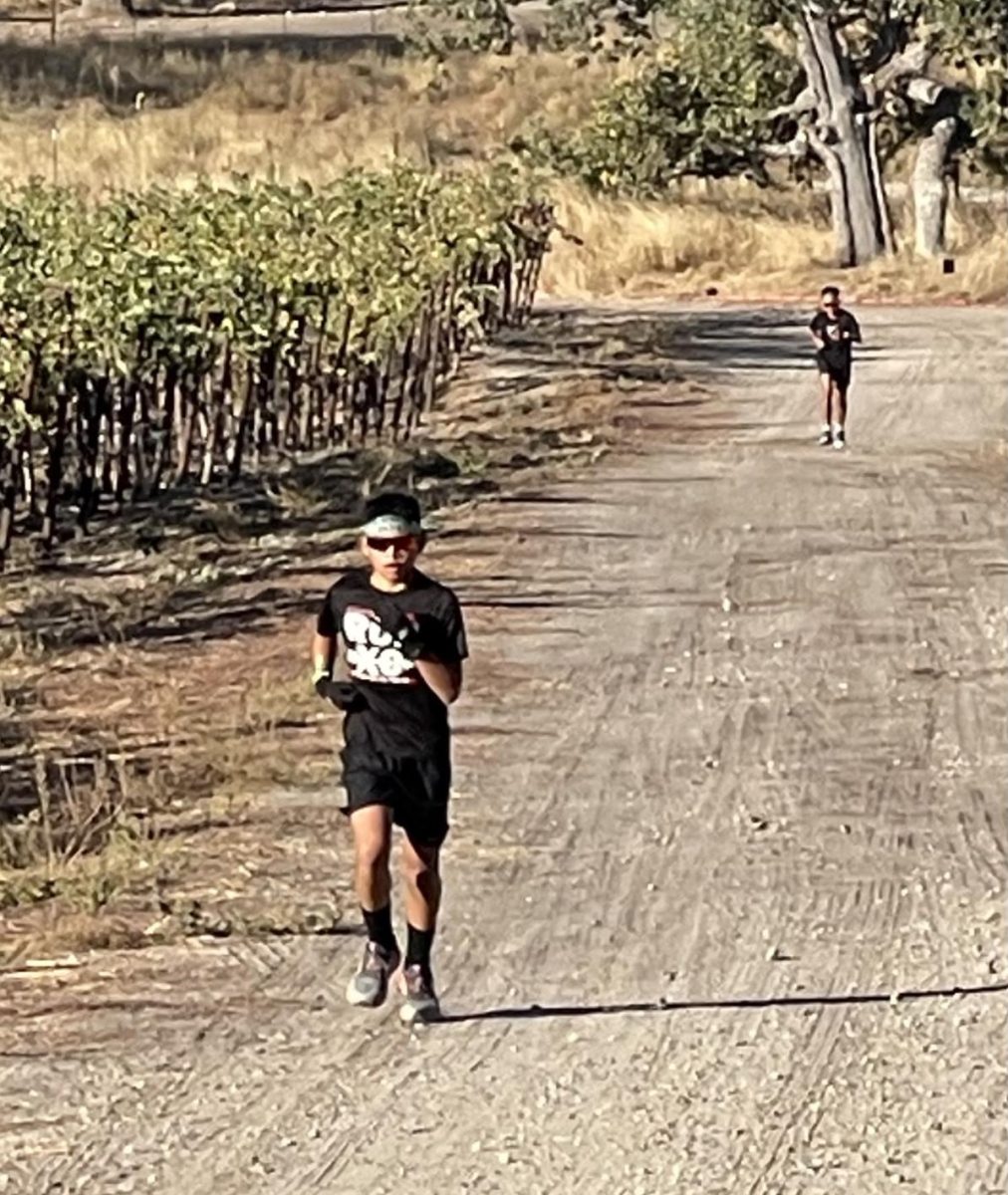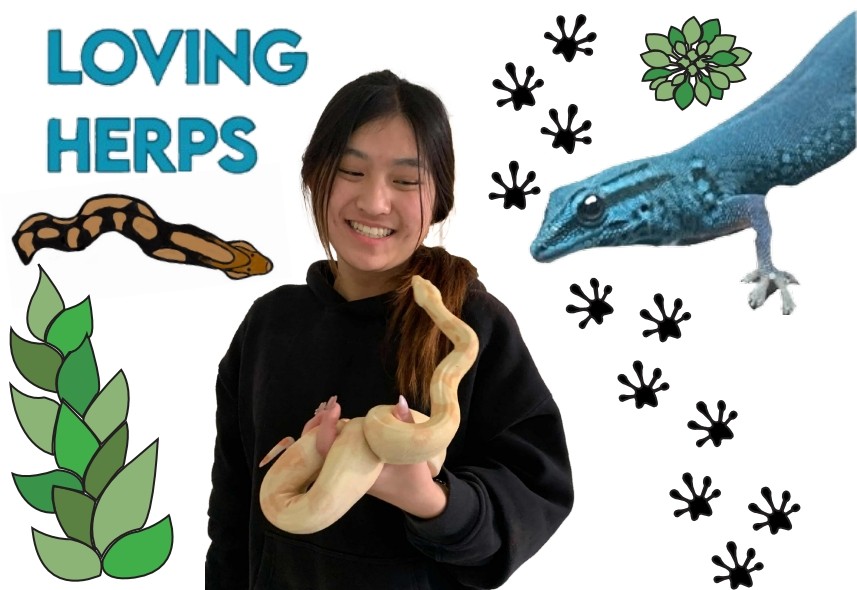While junior Joaquin Nava opens the new box of oyster mushrooms that he has received from Field and Forest Products, he anticipates when the fungi will begin to fruit.
Nava’s passion for mushrooms goes as far back as to having drawings of mushrooms from when he was 7 years old. He believes that the study of fungi and mycology is crucial and contributes to multiple fields such as medicine and food.
“Mushrooms are something that we use and something that affects our lives every day, but we don’t notice it,” Nava said. “Fungi are pretty important. Food products like cheeses, kombucha and breads wouldn’t exist without fungi. [Things such as] medicine and food are such an interesting topic.”
Along with growing his own mushrooms, Nava also grows mushrooms in garden beds at Walnut High School with his club, Mycology. Nava started the club after discovering that there was not a current club that funded his interests for biology.
“[Mycology] diversifies Walnut. It’s its own thing. It’s a place where you can explore an interest. Field and Forest is a family-owned business based in Wisconsin,” Nava said. “I had been searching to join some clubs, but I didn’t find many that resonated with my interest in science. I wanted to learn more about mushrooms and their cultivation practices and to share experiences with peers. Starting the club has allowed me to deepen my fondness for biology outside of the classroom.”
At Mycology’s next meeting, Nava plans to start growing garden beds that were donated by instructional dean Marta Dibell. Nava is currently looking for the right soil base for the garden beds.
“The layers of substrate will include straw, soil, wood chips and cardboard. At the next meeting, we [plan on] filling and inoculating [to immunize] the garden beds with wine cap sawdust [substrate with existing mycelium inside]. The mushrooms will be watered and collected by any interested members. I’ve never grown mushrooms in an environment like this, so I’m learning with the support of my adviser and officers” Nava said.
When Nava was 12, he discovered that mushrooms could be grown at home using a breeding box. As time went on, he began to understand how to grow mushrooms better.
“The golden oyster, which was one of the first [mushrooms] I grew, I spent hours watering or misting,” Nava said. “I’ve found that the more you handle [the mushrooms], the less likely they are to grow healthy.”
Nava often uses pre-inoculated fruiting blocks to cultivate his mushroom or take parts of an existing mushroom and grow it from there.
“If I want to inoculate [a mushroom] I could have a sterilized grain in a jar. Then I can use a sterilized scalpel or box cutter to cut open the mushroom and cut a little section inside of the mushroom that’s sterile out, and drop that in my sterilized grain, and it’ll colonize the grain,” Nava said.
Nava has grown multiple types of oyster mushrooms such as blue, brown and golden oysters and lion’s mane. The life of a mushroom begins when it starts to fruit.
“[For example, fruiting] for oysters, it’ll look like a clump on the surface of the opening. It will look like a ball of mycelium, so like a white clump. Then the clump will start like defining and there will be balls on top of the clump. Those will start growing and branching out,” Nava said.
From being interested in nature since youth, Nava believes his interest in biology sparked through spending his childhood in his grandparent’s backyard.
“When I wasn’t catching up on ‘Jessie’ and ‘Bizaardvark’, you’d find me in my Nana’s garden turning over snails and examining their shells or picking at the moss against the shaded part of the house. I started to grow mushrooms because I had so many questions about them. I will continue to grow them because I have new questions,” Nava said. “It was the unique things I had never seen before that sparked my interest.”








